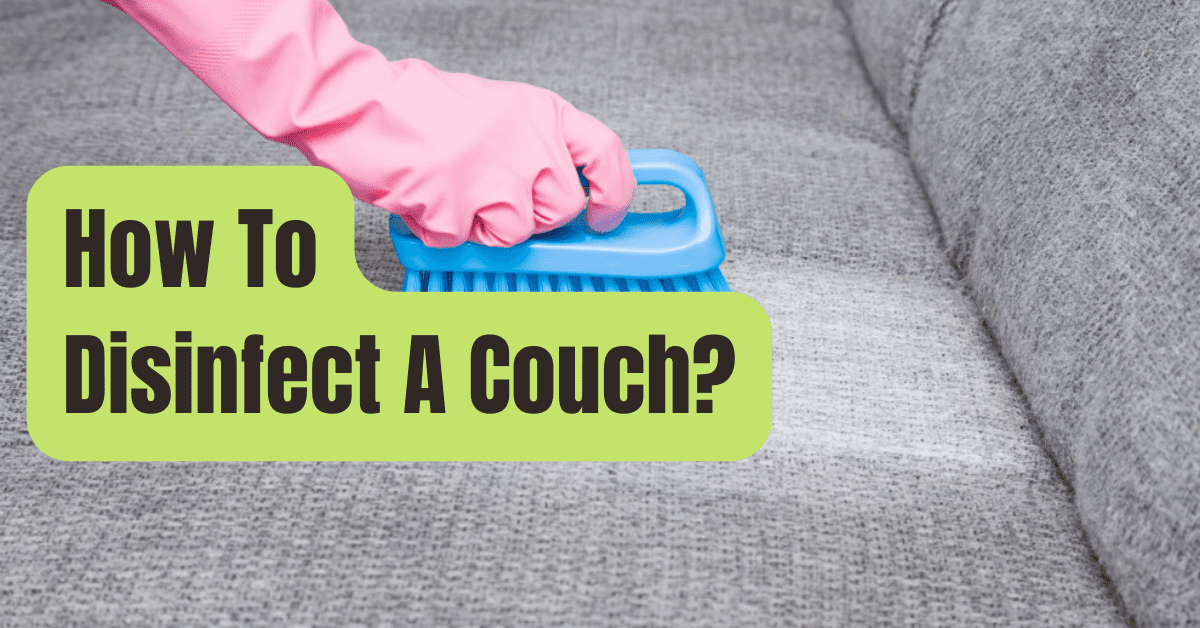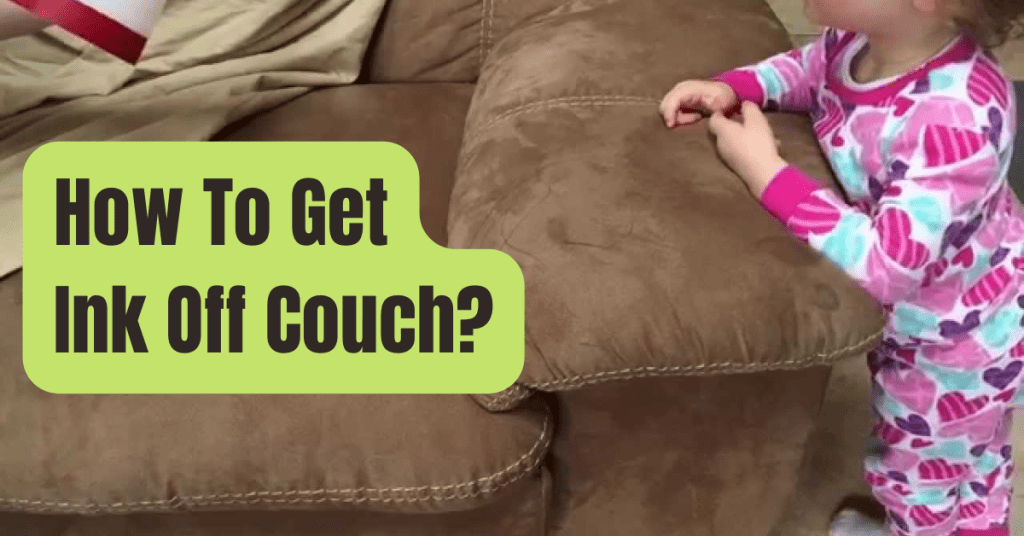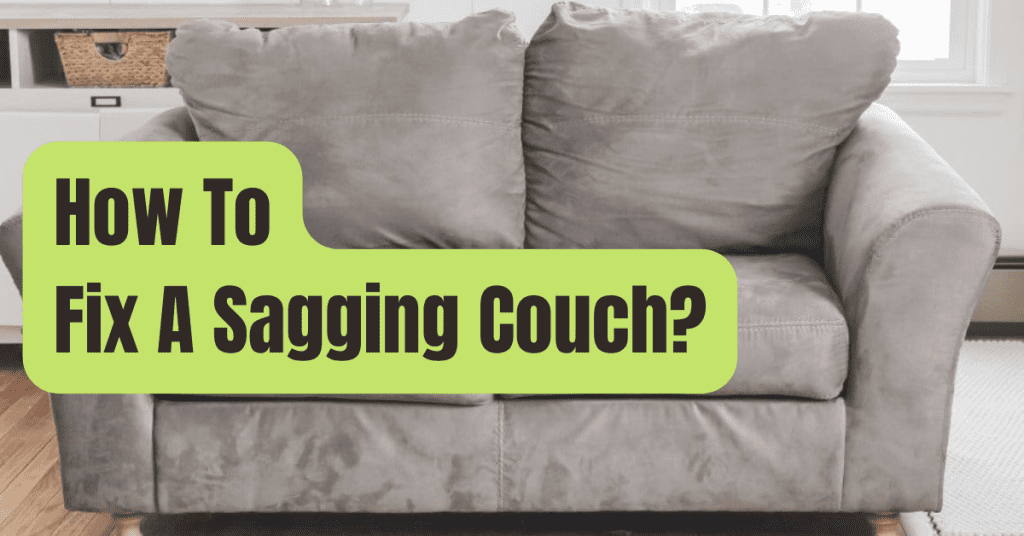A sofa, as the focal point of your house, is subjected to everyday assault from children, dogs, and family members.
It’s also a breeding area for germs, which causes nasty odors and viral propagation.
Learn how to clean a sofa on a regular basis.
Germs may be found in a variety of locations, including grocery store shopping carts, doorknobs, dollar notes, and your toothbrush.
As a consequence of spilt food or drink, filthy hands, and airborne viruses, your couch upholstery becomes coated in a variety of microorganisms.
Vacuuming and cleaning your living room sofa removes dust, filth, and stains from the surface, but it does not necessarily sterilize the fabric.
When it comes to keeping your home germ-free, sanitizing your couch properly during house cleaning goes a long way.
How to Clean a Couch
While you may feel compelled to spray your couch with a bleach solution to remove bacteria, this might harm the fabric.
Cleaning chemicals that are appropriate for a fabric sofa may not be safe for a leather or suede sofa.
We provide a variety of cleaning treatments for properly removing germs and bacteria from all kinds of couch upholstery.
The First Steps to Cleaning Your Couch
Clean the sofa thoroughly using a vacuum cleaner to remove any loose dirt, dust, or debris before applying any disinfectant.
Cleaning a Couch
Clean the backrest, backside, and armrests of the sofa using a vacuum upholstery attachment.
Remove the cushion seats from the couch and place them aside if they are detachable.
Clean the bottom half of the sofa using the vacuum attachment, being careful to get into crevices.
Vacuum the cushions’ tops and bottoms.
Getting Rid of Germs on a Sofa
To clean sofa bacteria and remove stains, use a tiny quantity of soap and water.
Cleaning your couch using these simple chemicals on a regular basis not only offers it a thorough cleaning, but it also inhibits viruses and germs from growing on commonly used home objects.
Cleaning And Sanitizing Your Sofa At Home
- 2 cup boiling water
- 1 tablespoon dishwashing liquid
- Bottle for spraying
- A fresh cloth
Pour the water into a bottle sprayer and add a mild soap, such as laundry detergent or dish soap, to produce this easy DIY sanitizing spray.
Shake the container carefully to combine the ingredients without making too much foam.
Remove the sofa cushions off the couch and place them in a separate location.
Begin with one portion of the sofa and work your way to the other.
To sterilize the surface and remove tiny spots of common filth, spray the solution over the upholstery and wipe clean the moistened area with a cloth or sponge.
If the fabric becomes too wet or soiled, wring it out as you go.
Allow the couch to air dry before washing the sofa cushions.
If your sofa’s cleaning label allows it, remove the cushion covers and wash them according to the manufacturer’s directions.
Place the covers in the drier and then reinstall them on the seat cushions and sofa.
If your cushion covers aren’t detachable, clean them using the same cleaning spray as the rest of the couch.
Allow them to thoroughly dry before reinstalling them on the sofa.
Disinfectant Spray for Your Sofa or Couch (Homemade)
Alcohol is one of the greatest methods to clean a couch.
When someone in the family is ill, this DIY disinfectant spray for sofa is excellent.
The virus is prevented from spreading to other family members by spraying this solution on them.
Disinfectant Spray with Alcohol
- Rubbing alcohol (two cups)
- 1 cup of liquid
- Bottle for spraying
In a spray bottle, combine the alcohol and water and shake gently to combine.
Hold the container’s spray nozzle about seven inches above the top of the couch and spray evenly to disseminate the liquid.
Allow the upholstery to air dry.
Some forms of stains may also be removed using alcohol.
Spray a stain with a stain remover and gently wipe it away with a clean cloth.
How to Use Vinegar to Disinfect a Fabric Couch
White vinegar has disinfecting characteristics, is anti-allergenic, and is a natural bacterium and germ killer.
Here’s how to use vinegar to disinfect a fabric sofa.
Sanitizing Spray with Vinegar
- 1 cup of liquid
- 1 cup vinegar (white)
- Bottle for spraying
Fill a bottle sprayer with equal parts warm water and white vinegar and shake vigorously to combine for a great DIY sofa deodorizer and sanitizer.
Place the sanitizer about a foot away from your couch and spritz it all over.
In a steady motion, go from one end to the other, being careful to reach into the corners and into any cracks and crevices.
Before sitting on the sofa, let it air dry.
This formula may also be used to disinfect mattresses.
Remove all linens from the mattress and vacuum it.
Using the spray, saturate the whole area and let it dry before replacing the sheets and blankets.
How to Clean a Leather Couch
Vinegar is a versatile tool that may be used in a number of ways around the house.
Use it to disinfect leather sofa surfaces in this scenario.
While washing the leather surface, vinegar’s disinfectant qualities kill bacteria and viruses.
Disinfectant for Leather Sofas
- Water
- Vinegar
- Bucket
- Cloth made of microfiber
- Towel that absorbs liquid
In a bucket, mix equal parts water and white vinegar and immerse a soft cloth into the solution to disinfect a leather couch.
Wipe clean the whole surface of the couch after wringing out the cloth as much as possible.
Wipe away all of the residue with a dry, soft cloth.
How to Clean a Suede Microfiber Couch
Microfiber suede fabric is made up of synthetic strands that need particular washing and disinfection techniques.
To sterilize and remove dirt and grime from suede, use the following products.
Suede Microfiber Disinfectant
- Bottle for spraying
- A bath in warm water
- Soap for dishes
- Alcohol rubbing
- 1 teaspoon bicarbonate of soda
- Sponge with a soft texture
- Brush with a soft bristle
The first step is to double-check that your couch is safe to clean with this solution by looking for particular directions on the cleaning tag.
If the care label has a ‘W,’ fill a spray bottle halfway with water, a few drops of dish soap, and the baking soda, and shake gently.
Fill a spray bottle with rubbing alcohol if your sofa’s label has a ‘S’ on it.
Spray the solution in portions onto your couch’s surface.
As you go, wipe each spot with a gentle sponge.
Clean the backrest, armrests, and all sides of the cushions using a damp cloth.
Allow the whole couch to dry fully before softly brushing the fibers with a soft brush to refresh them.
Keeping a Polyester Couch Clean
Polyester upholstery is formed of natural compounds found in synthetic fibers and plant cuticles, and is a typical kind of sofa upholstery.
Check the washing labels on your polyester couch for precise instructions before cleaning it.
The disinfecting power of white vinegar kills germs, while gentle soap removes grime in this cleaning solution.
Sanitizer for Polyester Couches
- 1 gallon of hot water
- 1 tablespoon vinegar (white)
- 1 tablespoon dishwashing liquid
- Bottle for spraying
- A fresh cloth
- Brush with a gentle touch
Add the laundry detergent to a bottle sprayer filled with water and vinegar.
Shake the container lightly to thoroughly combine the ingredients without releasing too many soap bubbles.
Spray the solution directly onto the sofa in portions, being careful not to soak the fabric.
Move on to the next phase after wiping the area off with a soft towel.
Allow the couch to air dry before brushing any stiff fibers with a gentle brush.
Cleaning a Sofa with Steam to Kill Germs
One of the most effective techniques for destroying germs is steam.
The steam’s heat not only eliminates dirt and grime, but also allergies and pathogens such as mildew, viruses, dust mites, and other pathogens.
Sofa sanitizing using a steam cleaner
- Cleaner using steam
- Attachment for upholstery
- Water
- Cleaner for upholstery
Follow the manufacturer’s directions for your specific model of steam cleaner.
Prepare the cleaner for operation by filling the water tank with the proper quantity of water and cleaning solution.
Remove the cushions from the couch and clean the top side of each cushion with the upholstery attachment.
While the top side of the cushion dries, use the steam cleaning attachment to clean each piece of the couch.
Continue in sections, gently overlapping each portion to ensure that all areas are clean.
Flip the cushions over and continue the washing procedure on the bottom side once the top sides are dry.
Allow the whole sofa to dry fully before replacing the cushions in their original positions.
How to Clean a Sofa Slipcover
While a slipcover protects your couch from spills and germs, it must be cleaned on a regular basis to prevent bacteria and dirt build-up.
Check the cover’s laundry tag for specific directions before starting.
Cleaner and sanitizer for Slipcovers
The majority of slipcover washing instructions specify that they be washed in cold water and dried at a low temperature.
If this is the case, rinse the couch slipcover as advised using your preferred washing detergent and then hang it to dry in the sun for about two hours.
The sun’s rays eliminate any microorganisms on the fabric’s surface.
Sanitizing a couch not only kills virus-causing bacteria and germs, but it also deodorizes, decreases allergies, and kills dust mites and bed bugs.
Vacuuming, thorough cleaning, and disinfecting your furniture ensures that your whole family has a clean and germ-free environment in which to relax and enjoy themselves.
We’re glad we could teach you how to disinfect a couch using easy cleaning solutions, and we’d appreciate it if you shared our sofa disinfection ideas on Pinterest and Facebook with your friends and family.










